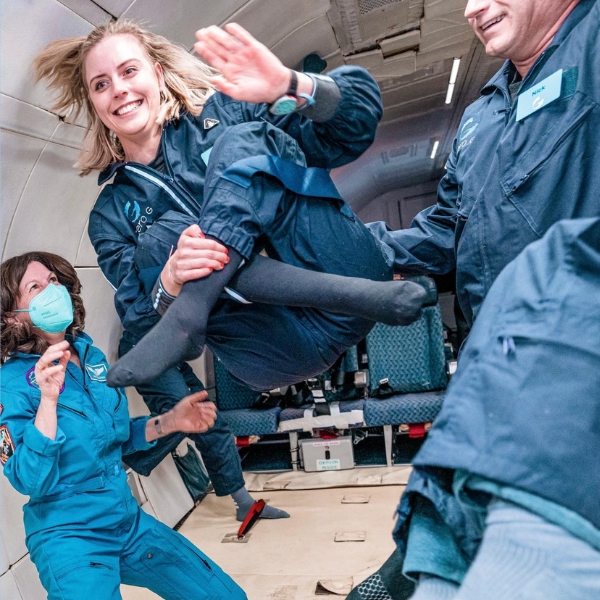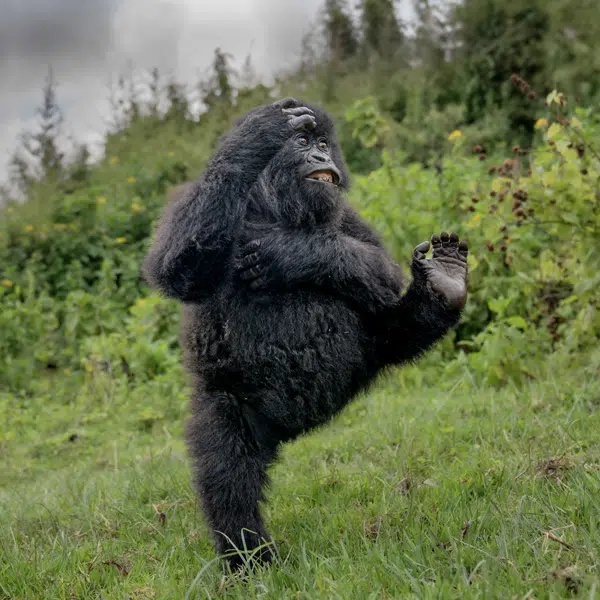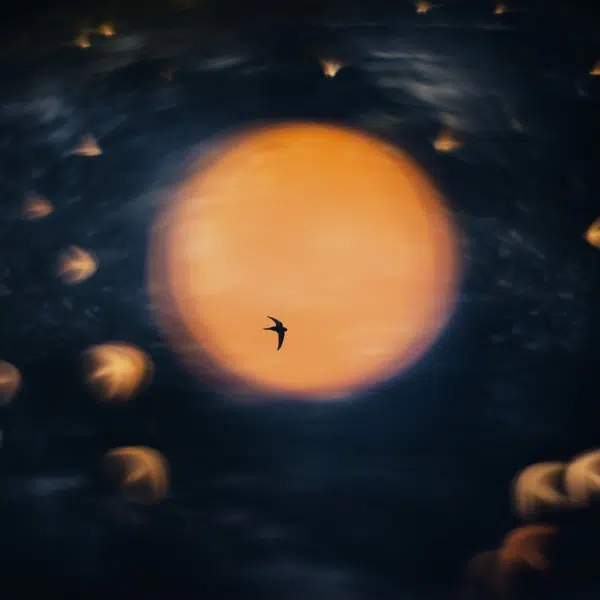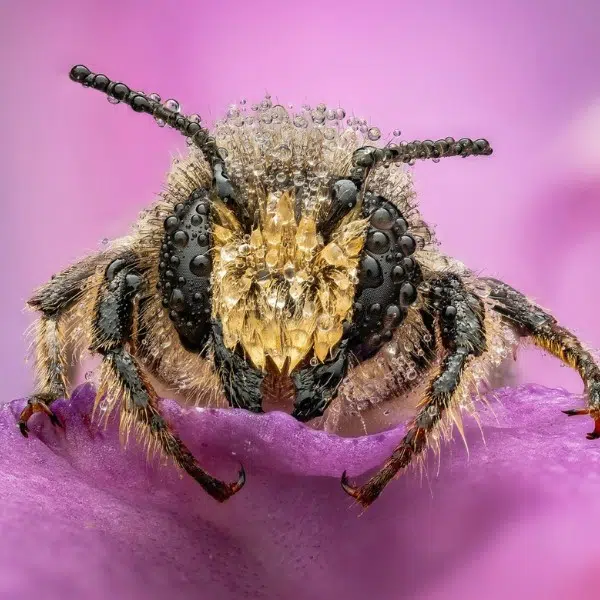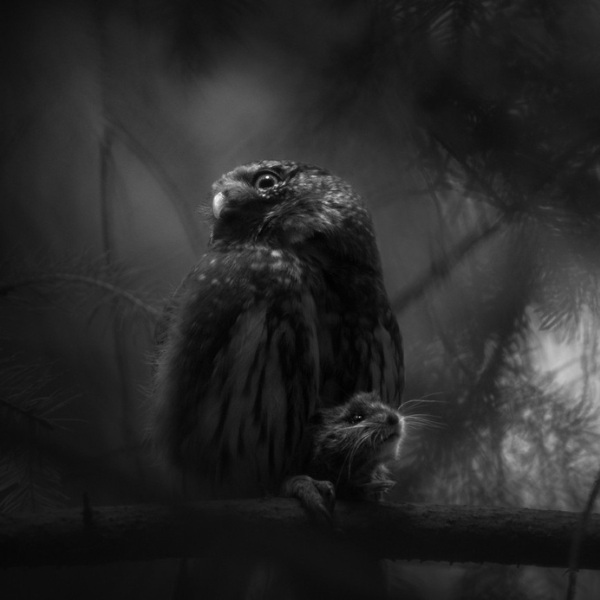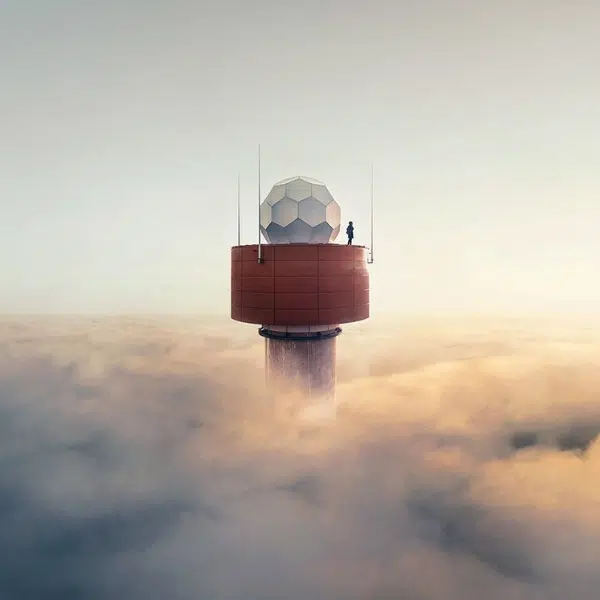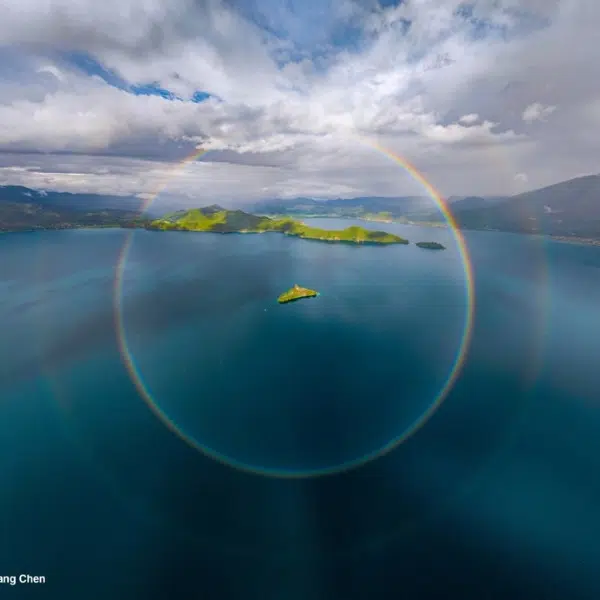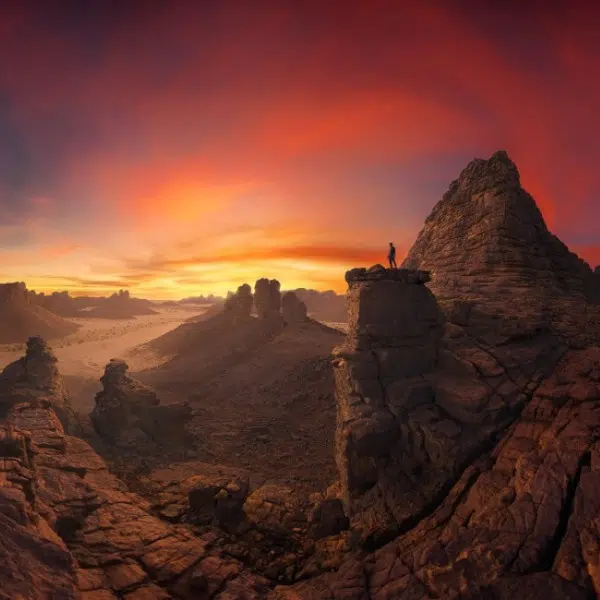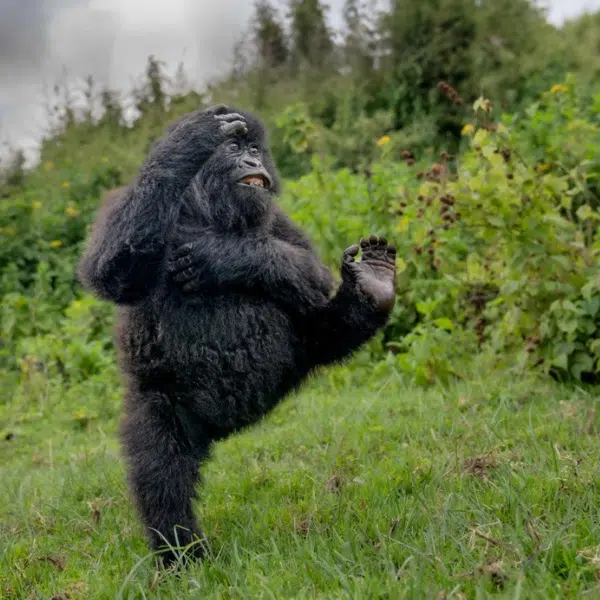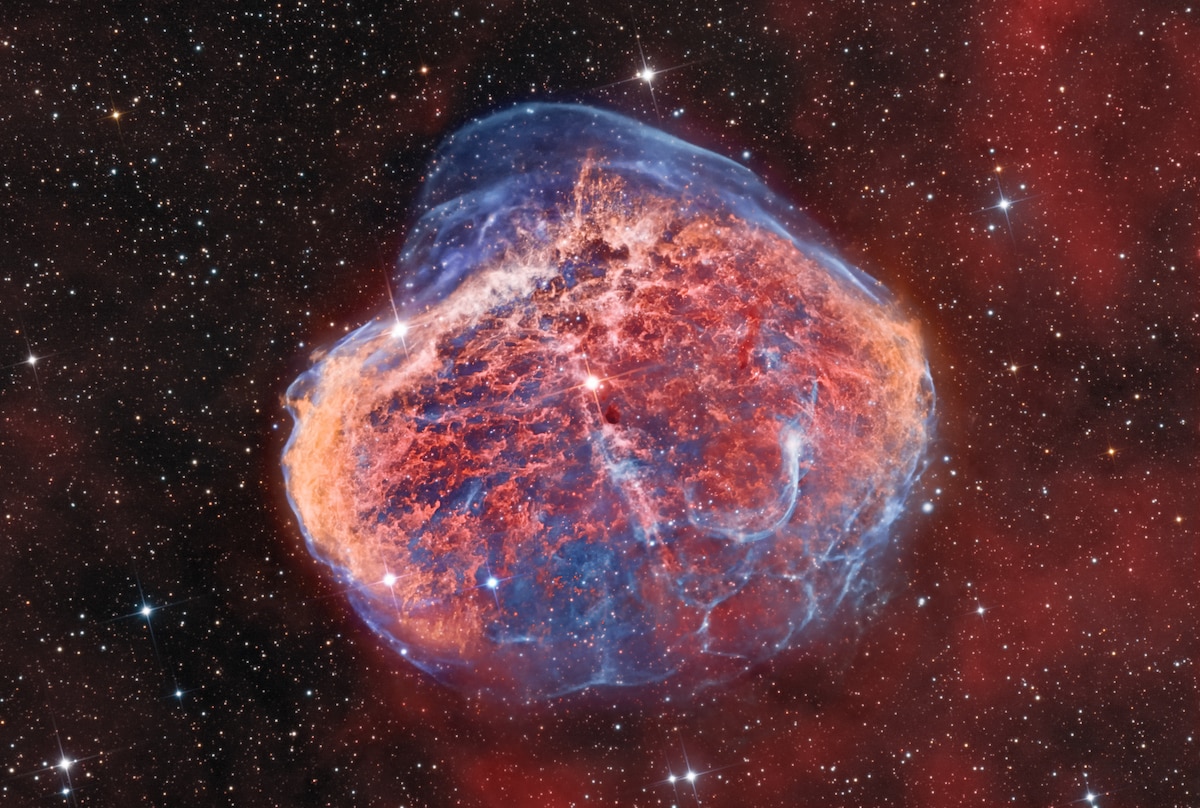
“NGC 6888 – The Crescent Nebula” by Bray Falls. Stars & Nebulae shortlist.
A deep view of the Crescent Nebula in Cygnus, the result of shockwaves originating from the Wolf–Rayet star WR 134.
This is a bicolor narrowband image with RGB stars. The nebula details were created from a false bicolor narrowband combination of H-alpha and OIII, and the star colors were added from a natural RGB image. All exposures were captured with a high-frequency AO guider at very high resolution (0.2″/pixel), requiring great seeing.
Now in its 14th year, the Royal Observatory Greenwich's Astronomy Photographer of the Year is an event that any lover of the stars looks forward to. While the winners of the 2022 contest won't be announced until September, the competition is whetting our appetite by releasing this year's shortlist. From the over 3,000 images that were entered by amateur and professional astrophotographers around the world, the field was narrowed to these 36 finalists.
The shortlist spans the contest's eight categories, as well as two special prizes and the youth competition. There were several themes that stood out during the 2022 competition. The first was the dominating appearance of Comet Leonard in the Planets, Comets and Asteroids category. Nearly one-quarter of the images in that category were of the new comet, which was discovered in January 2021. But it was Lionel Majzik's image of the long-period comet, which was taken in Namibia, that made the final cut.
“Photography was hampered by overcast weather conditions, but I was delighted to capture the incredibly spectacular Comet Leonard with its tail,” he said.
Light pollution, pollution, and their impact on astrophotography was another recurring theme in this year's contest. Sean Goebel's spectacular photo of the moonrise over Los Angeles perfectly encapsulates these issues. His shortlisted image was only made possible thanks to a winter storm that cleared the thick haze of pollution that would normally obscure this view.
These are just some of the stories that serve as reminders to never take any moment for granted. They also prove the incredible tenacity of these photographers, who go after the perfect instant to capture their view of the stars.
All of the winners will be announced during an online award ceremony on September 15. The grand prize winner will be named Astronomy Photographer of the Year and take some £10,000. Winners of all other categories and the Young Astronomy Photographer of the Year will receive £1,500. The winning images will be exhibited in the National Maritime Museum, alongside a selection of shortlisted images.
Check out some of our favorite shortlisted images from the 2022 Astronomy Photographer of the Year contest.
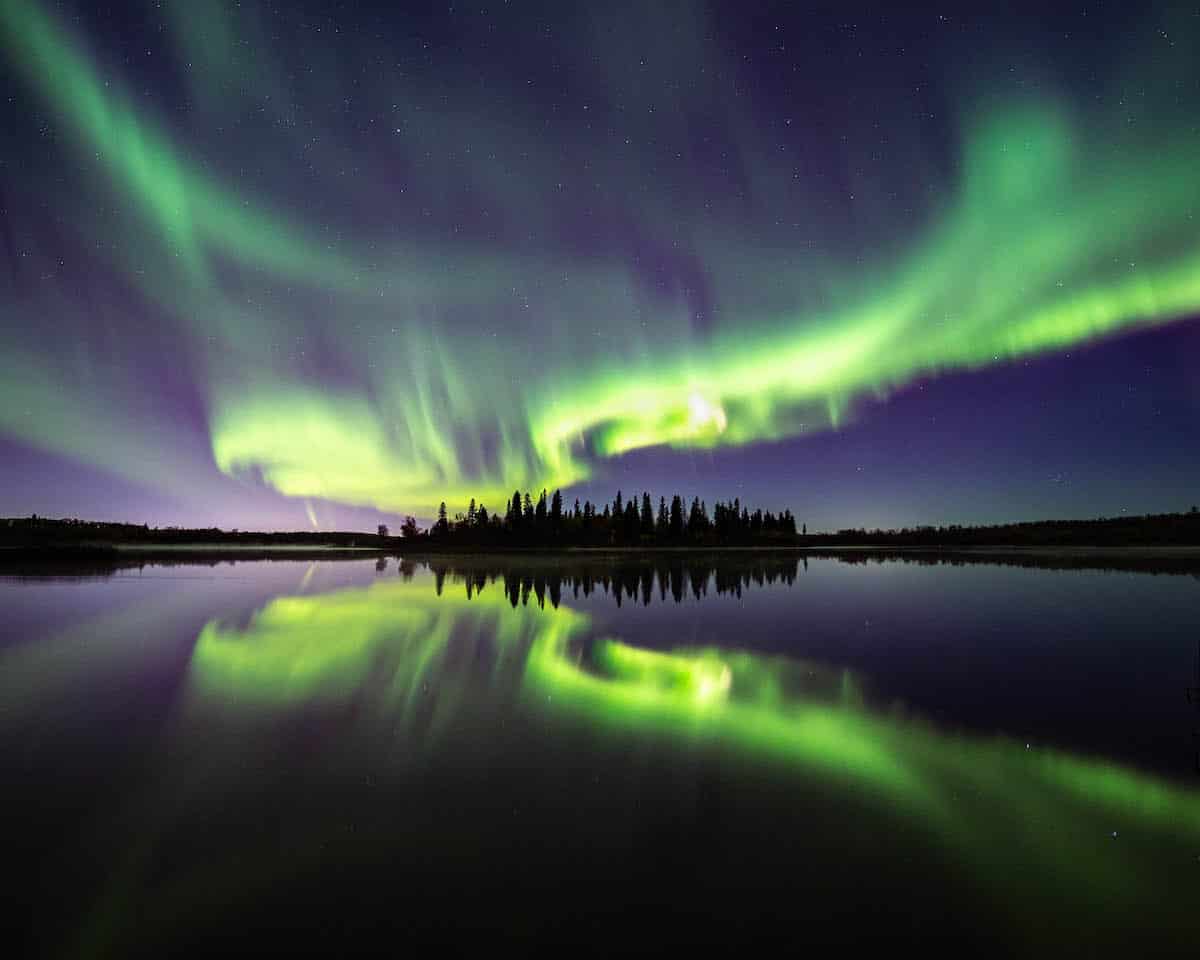
“Electric Wizardry” by Shane Turgeon. Aurorae shortlist.
The Northern Lights are reflected in the still waters of a lake in Alberta, Canada.
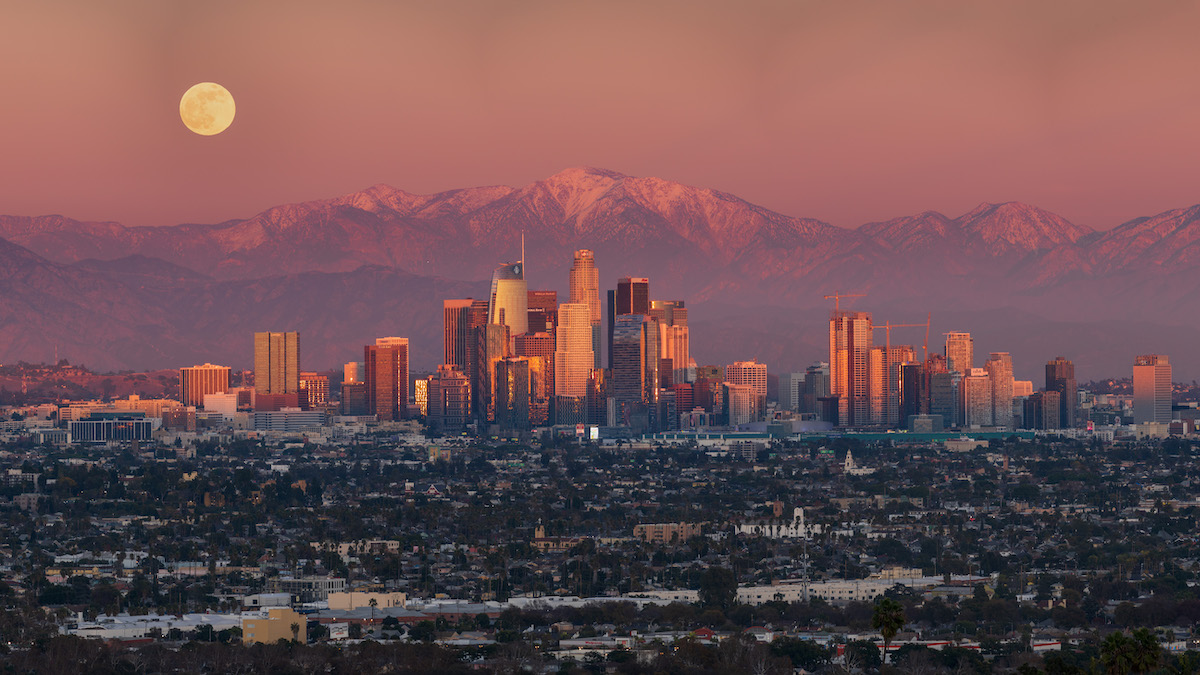
“Moonrise Over Los Angeles” by Sean Goebel. People & Space shortlist.
An alignment of the Moon, mountain and iconic skyline of Los Angeles following a winter storm on 18 December 2021.
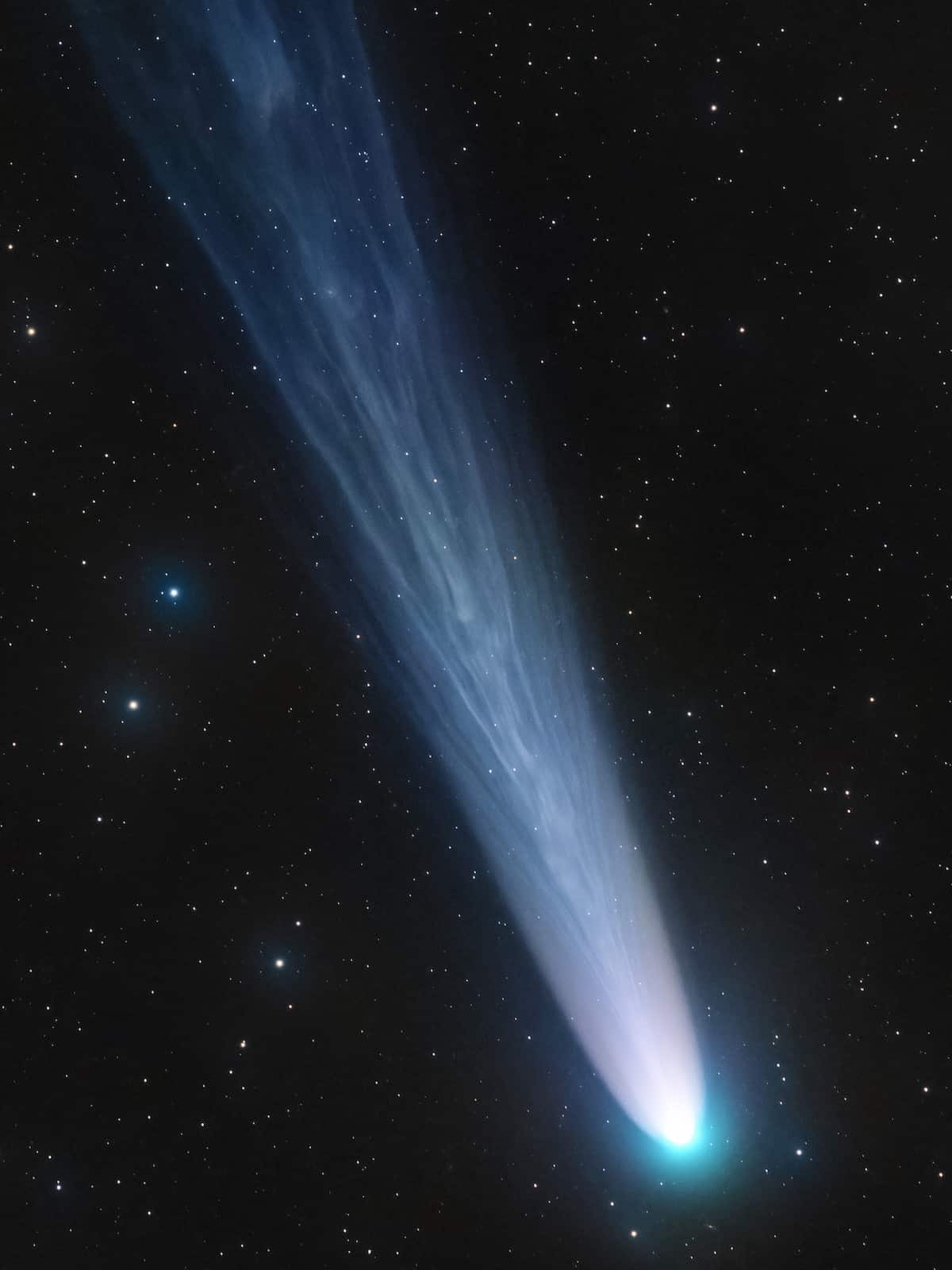
“Comet C/2021 A1 (Leonard)” by Lionel Majzik. Planets, Comets & Asteroids shortlist.
Comet Leonard was discovered by G.J. Leonard on 3 January 2021 and made its closest pass to Earth on 12 December 2021. The photographer secured some time with the robotic telescope at the Skygems Remote Observatories in Namibia on 27 December to capture this rare glimpse of a comet that will leave the Solar System and not be seen again.
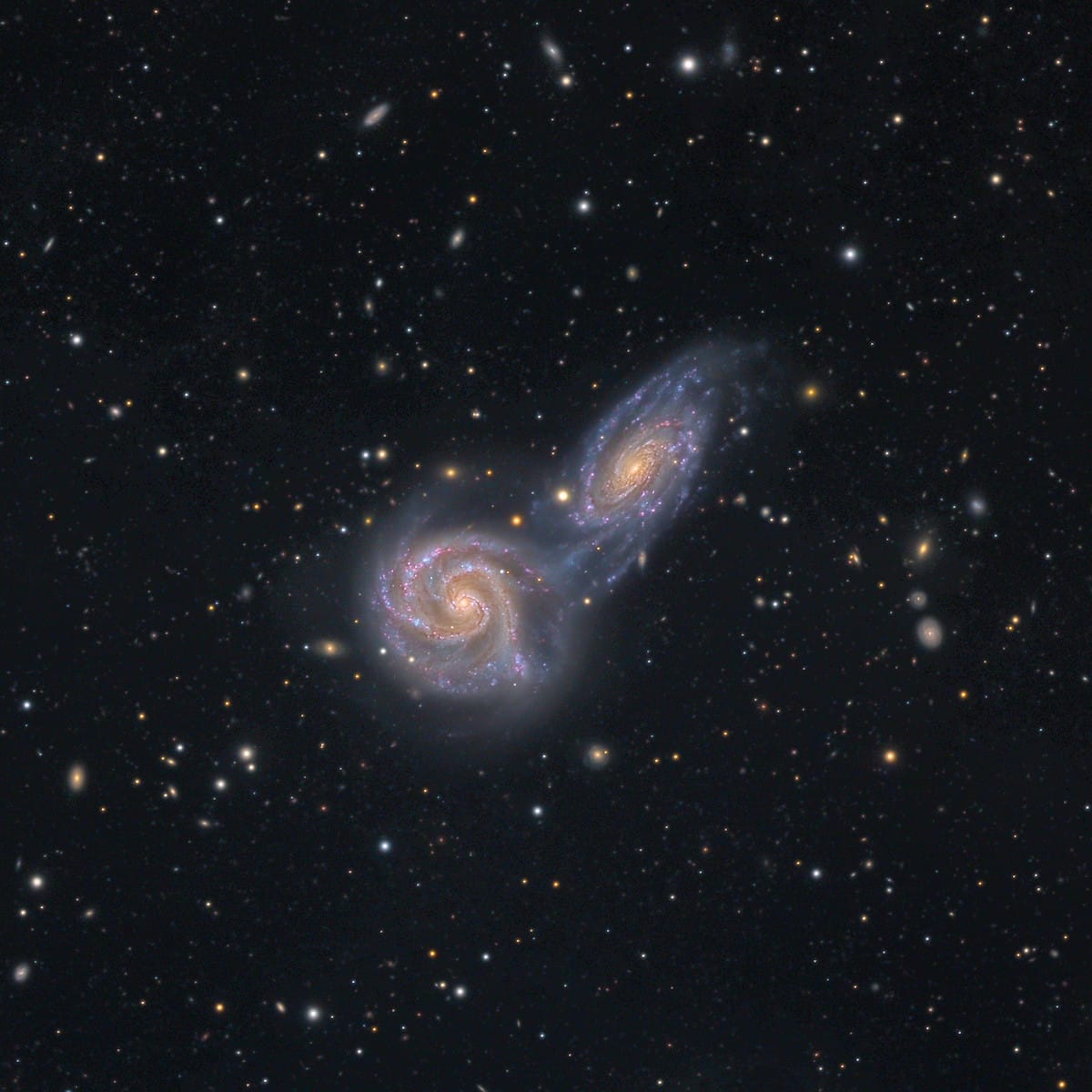
“Arp 271: Cosmic Collision” by Mark Hanson, Mike Selby. Galaxies shortlist.
NGC 5426 and NGC 5427 are two spiral galaxies of similar size engaged in a major interaction. Known collectively as Arp 27 , the interaction is expected to continue for tens of millions of years.
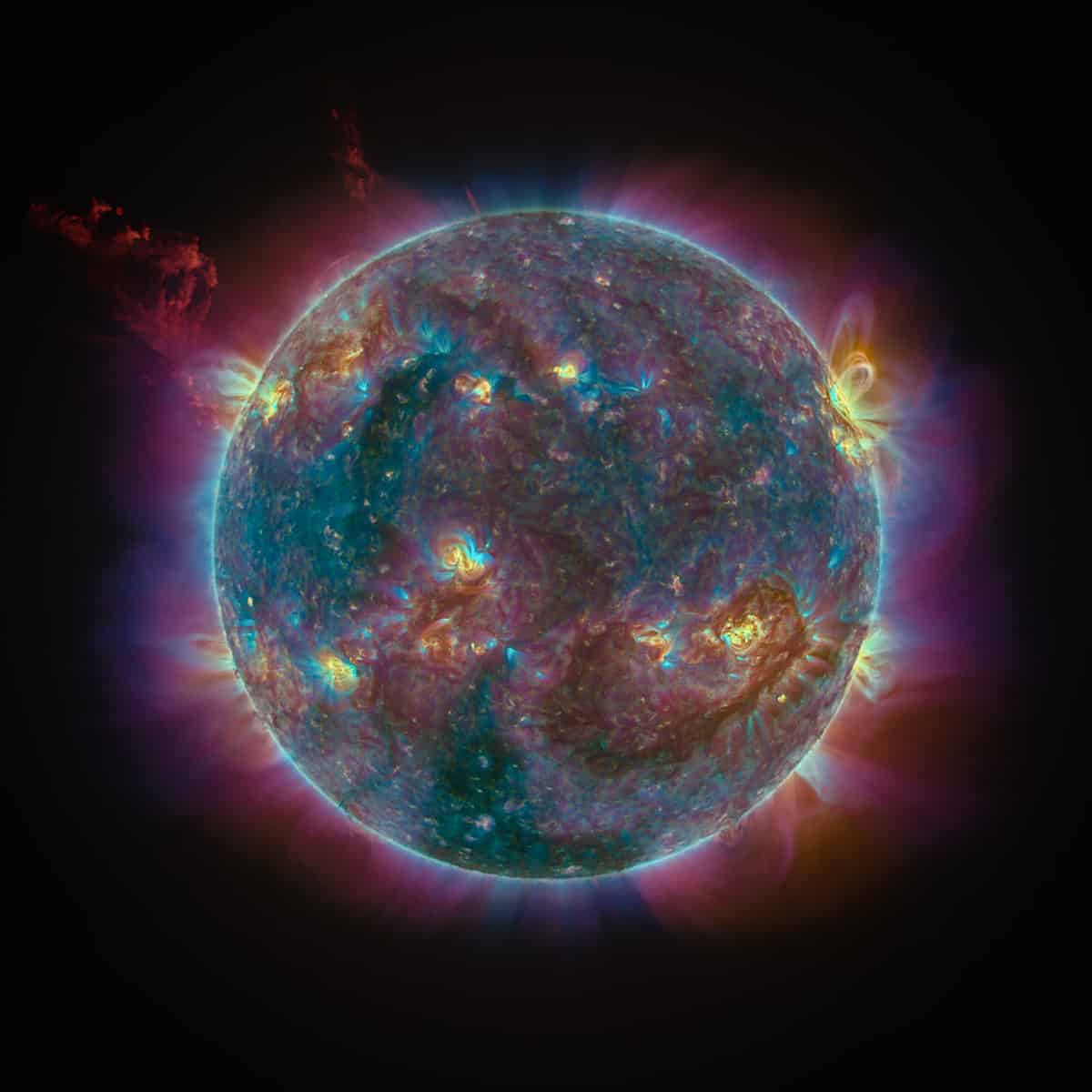
“Busy Star” by Sergio Díaz Ruiz, using open source data from NOAA GOES-16, Solar Ultraviolet Imager (SUVI). The Annie Maunder Prize for Digital Innovation shortlist.
This image depicts the busy surface and coronal activity of the Sun at 22:08 Universal Time on 15 February 2022. A powerful Coronal Mass Ejection (CME), shown in deep red in the upper left corner, erupted on the far side. Intriguing formations of plumes (in blue), coronal holes (in dark teal) and filaments (brown) are also represented. To capture all this activity in one image, it was necessary to combine observations in multiple wavelengths in the extreme ultraviolet.
Amateur and professional photographers are encouraged to enter their best astrophotography.
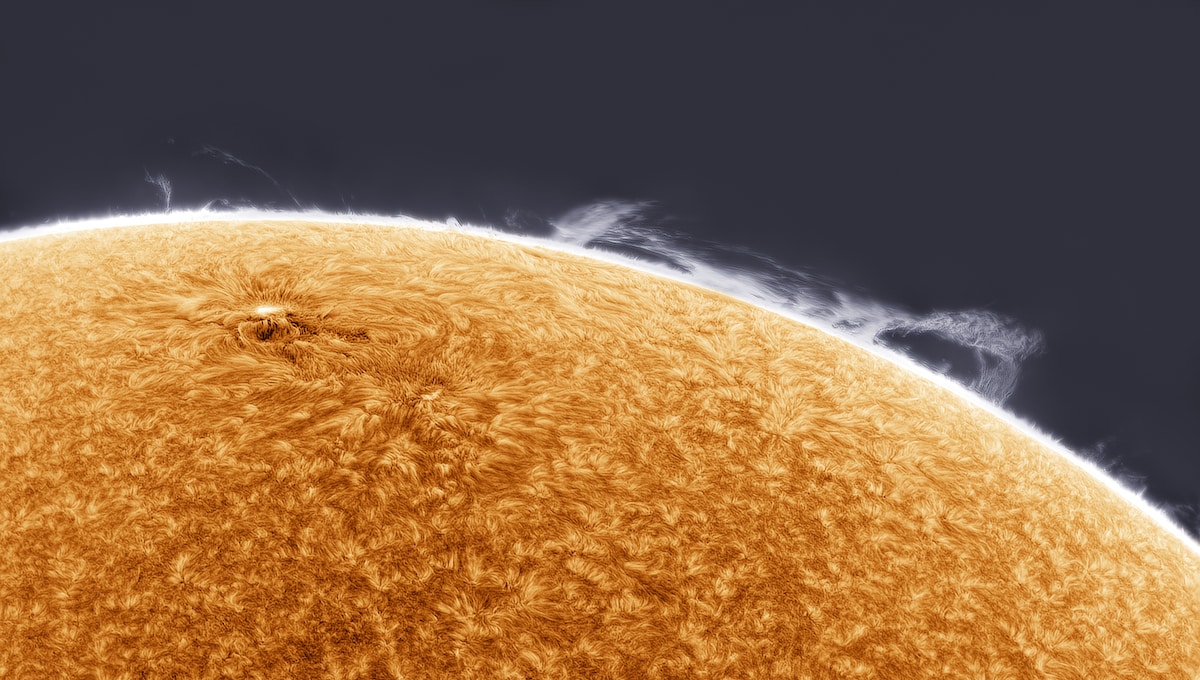
“Clouds of Hydrogen Gas” by Simon Tang. Our Sun shortlist.
Clouds of hydrogen gas give way as the magnetic field lines of the sun snap and clash together. This display of nature creates astonishing features, known as prominences, on the limb of the Sun.
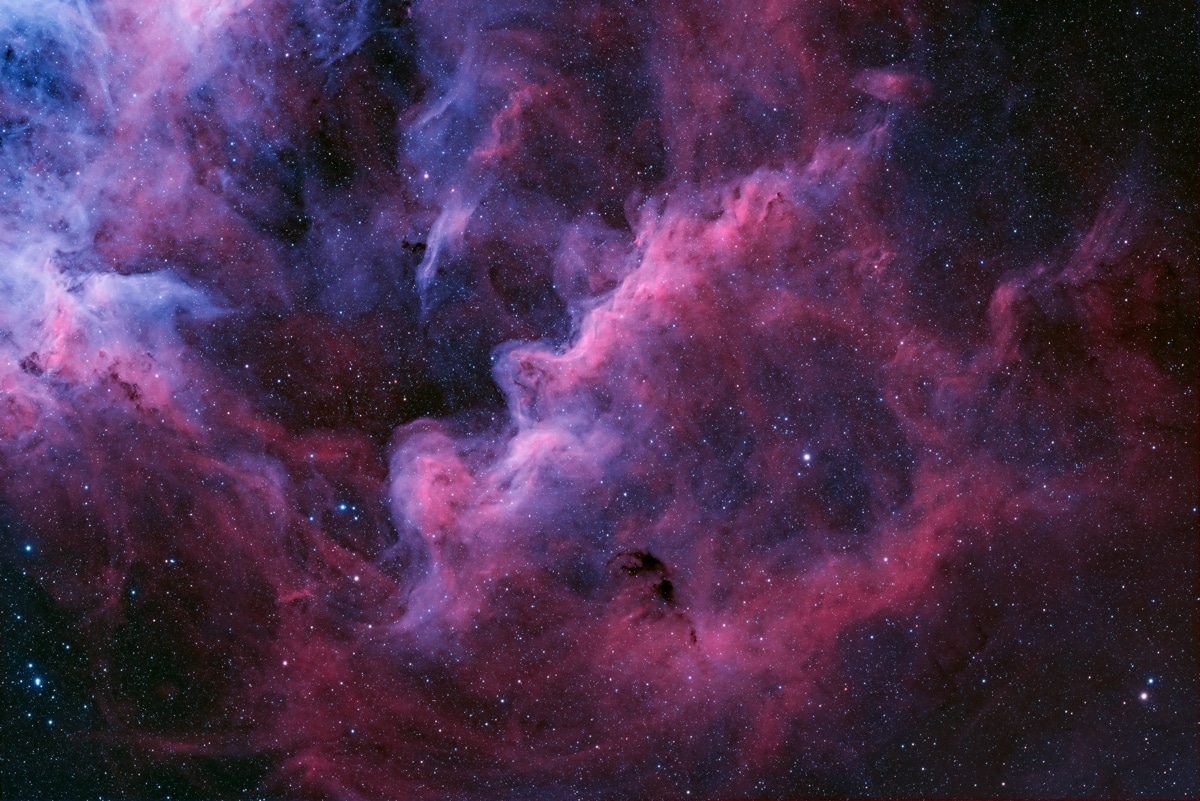
“Suburbs of Carina Nebula” by Ignacio Diaz Bobillo. Stars & Nebulae shortlist.
The main object in this image is a nebula catalogued as RCW 53c and seldom captured by astrophotographers.
This is a bicolor, narrowband rendition, with the HOO color-channel mapping.
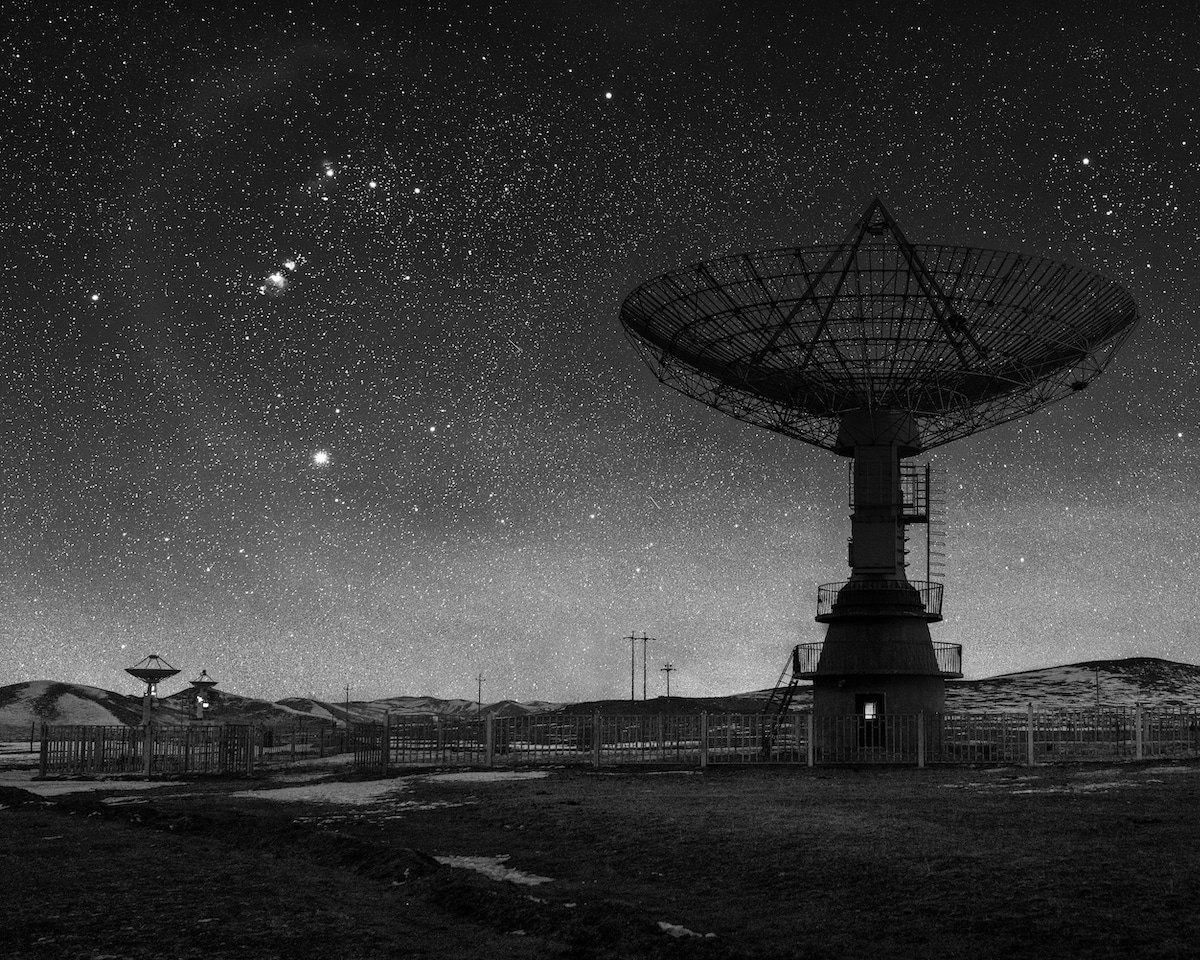
“Radio Telescope” by Liu Xuemei. The Sir Patrick Moore Prize for Best Newcomer shortlist.
The Mingantu Astronomical Observatory is in the Inner Mongolia Autonomous Region of China and is mainly used observe the Sun. Here, it is silhouetted against a starry night sky.
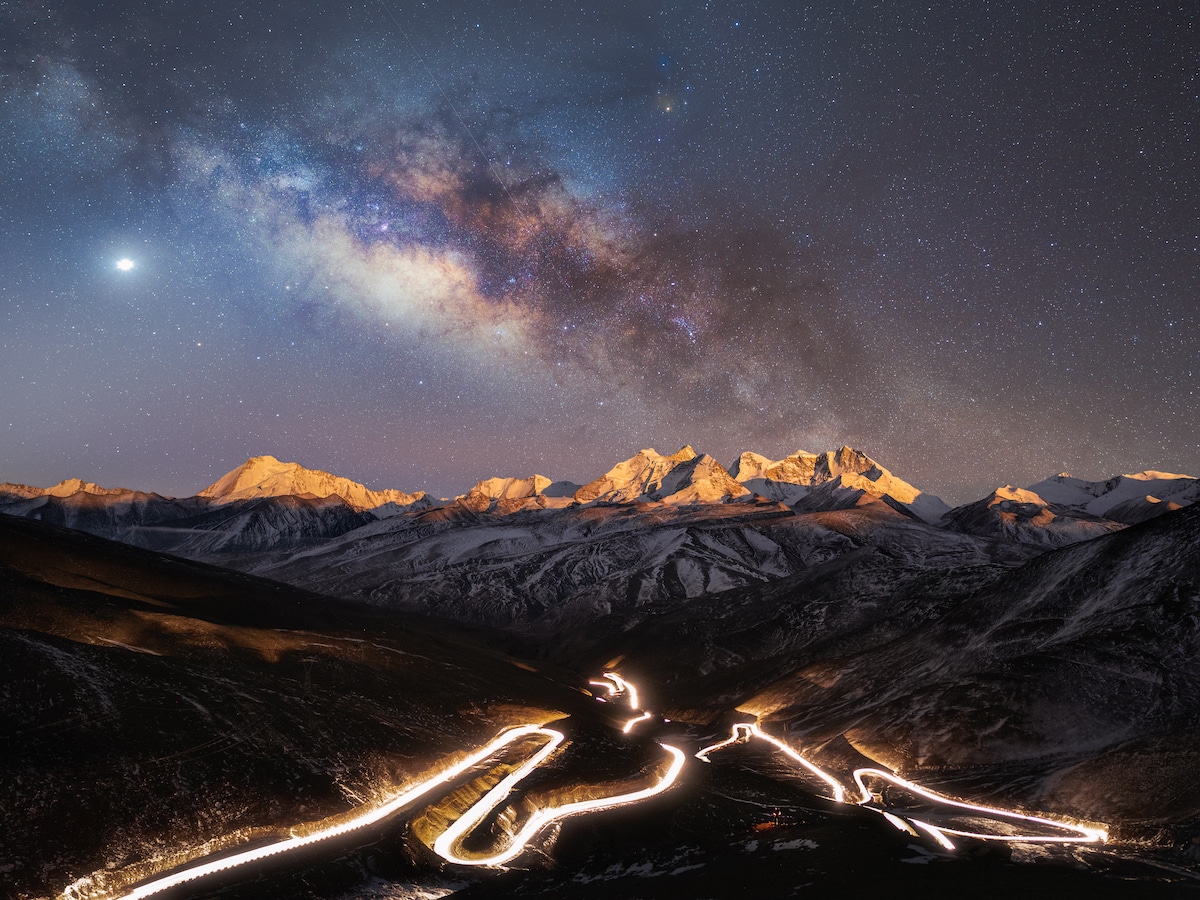
“The Starry Sky Over the World’s Highest National Highway” by Yang Sutie. People & Space shortlist.
The illuminated National Highway 219, the highest national highway in the world, snakes through the foreground, almost mirroring the majestic image of the Milky Way above. The two are separated by Kula Kangri, a mountain located in Shannan Prefecture, Tibet.
The contest, now in its fourteenth year, is organized by the Royal Observatory Greenwich.
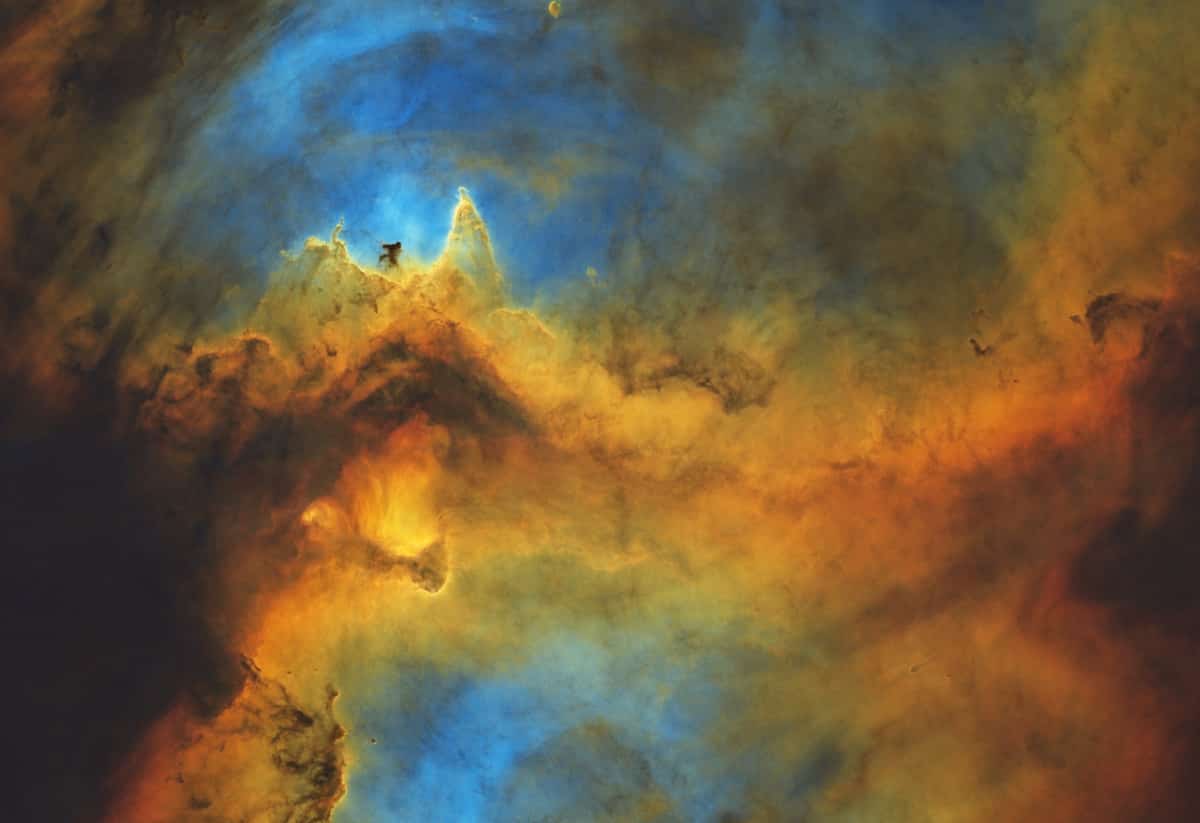
“IC 1871 – A Little Devil Riding on the Head of a Dragon” by Nan Wang, Binyu Wang. Young Astronomy Photographer of the Year shortlist.
This image shows the nebula IC 1848 and its core, IC 1871. The Soul Nebula is an emission nebula located in Cassiopeia. In the east of the Soul star cloud there is a complex of nebulae and star clusters known as the Heart Nebula (IC 1805) of nebula and star cluster. Together they are often referred to the ‘Heart and Soul’.
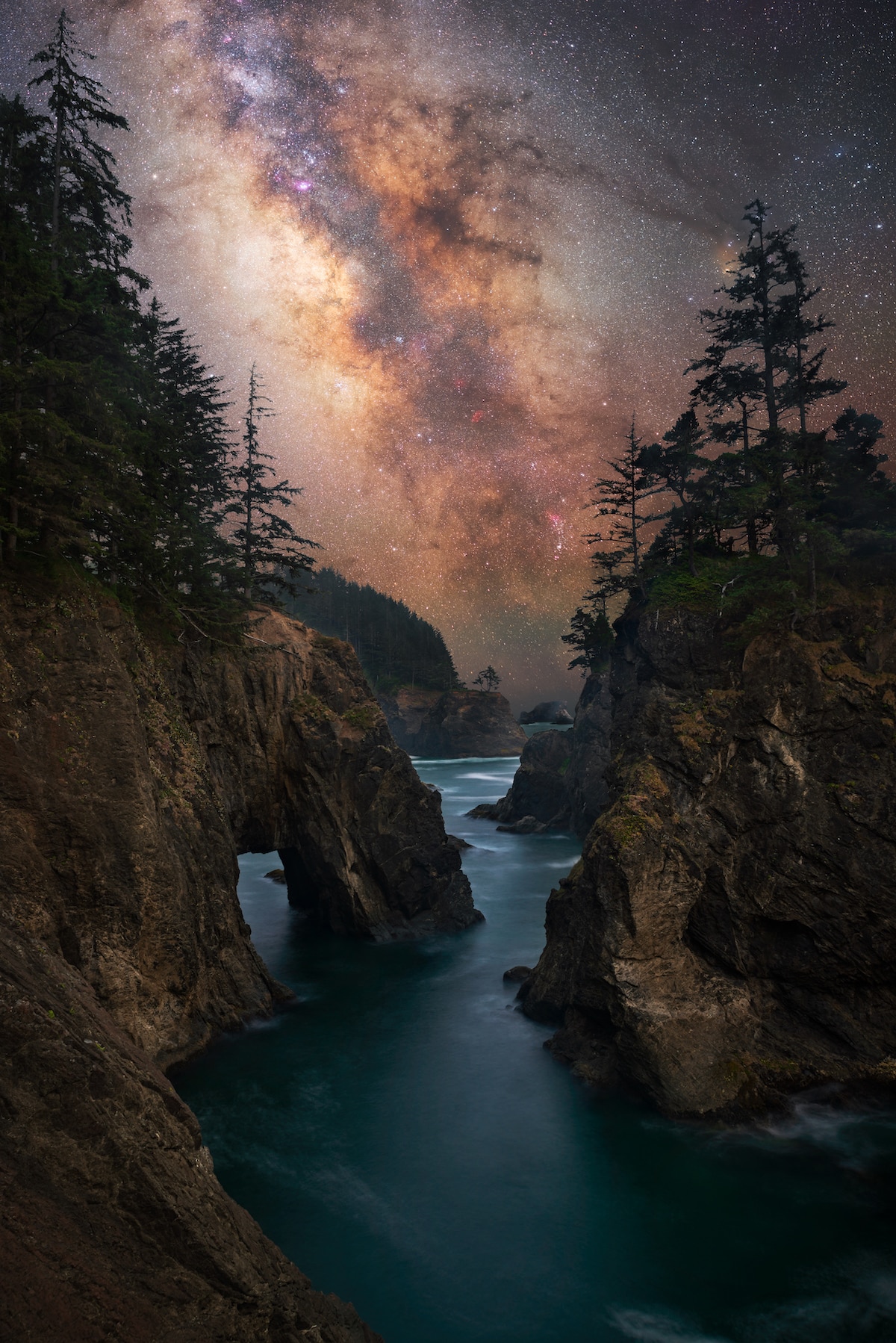
“Chidiya Tapu” by Vikas Chander. Skyscapes shortlist.
The nature reserve at Chidiya Tapu, with its rich and diverse flora and fauna, is an ideal destination for wide-field astrophotography, as it is far away from the city lights. Here the Milky Way seems to mirror the water on its course.
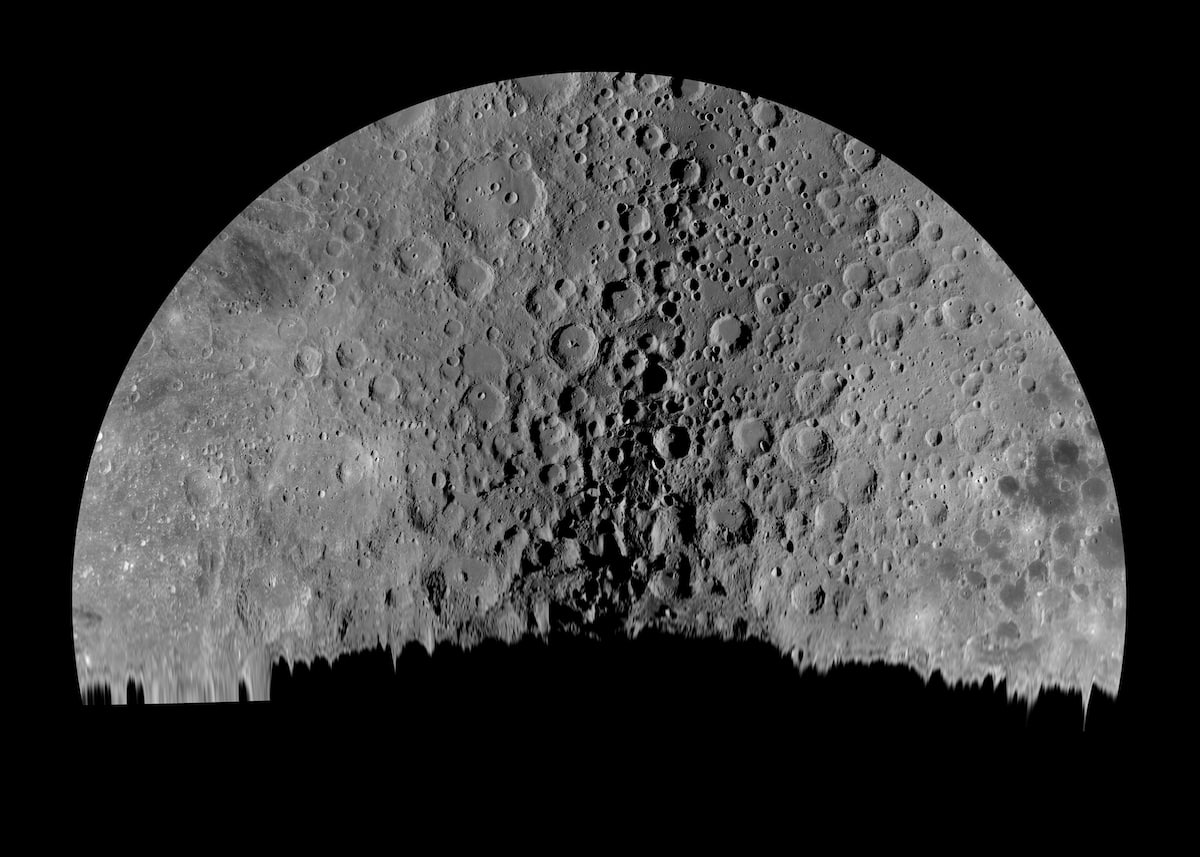
“Above the Lunar South Pole” by Tom Glenn. Our Moon shortlist.
A composite of images of the lunar south pole created on two different dates (giving different views of the region). It one of the most detailed amateur-produced maps of this part of the moon, which is very difficult to observe from Earth.
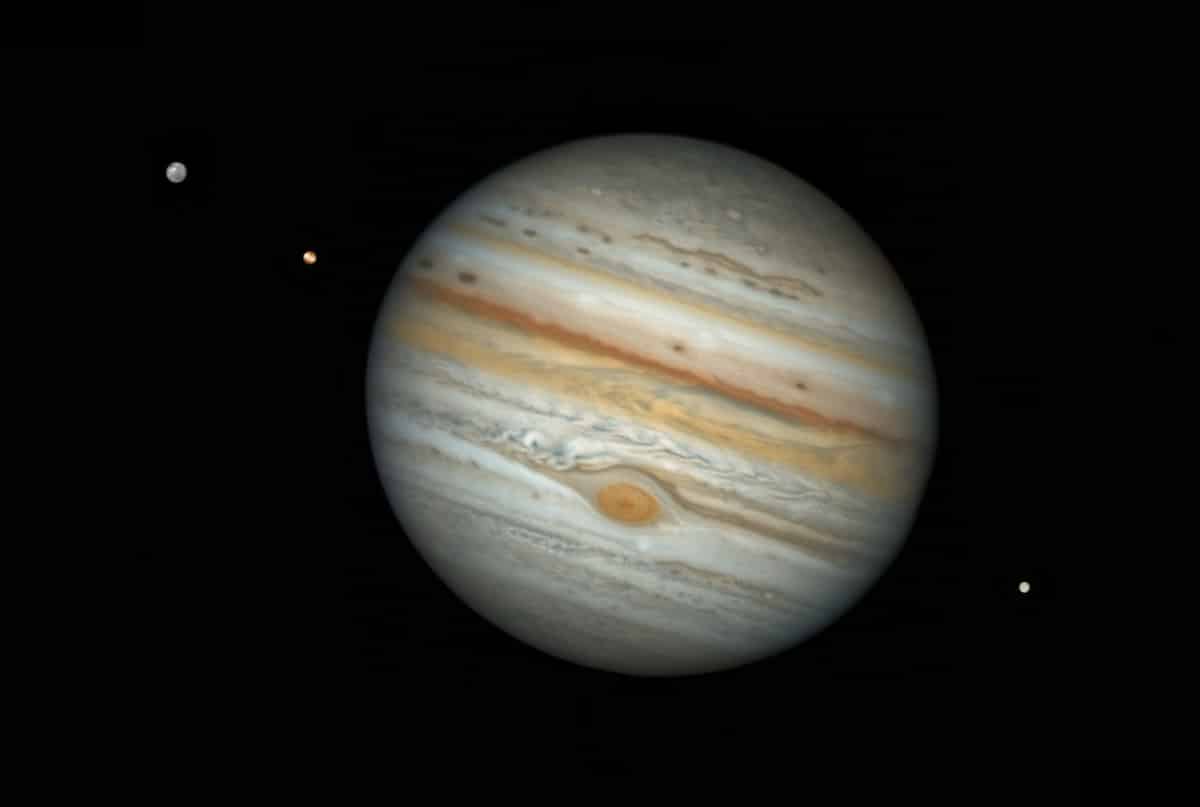
“The Jovian Family” by Damian Peach. Planets, Comets & Asteroids shortlist.
Jupiter captured with three of its largest moons. The famous Great Red Spot is visible on Jupiter itself, along with many other spots and storms. Similar details are also visible on all three of the Jovian moons. The bright ray crater Osiris can be seen clearly on Ganymede at the upper left.
The winners of the photo contest will be announced in September.
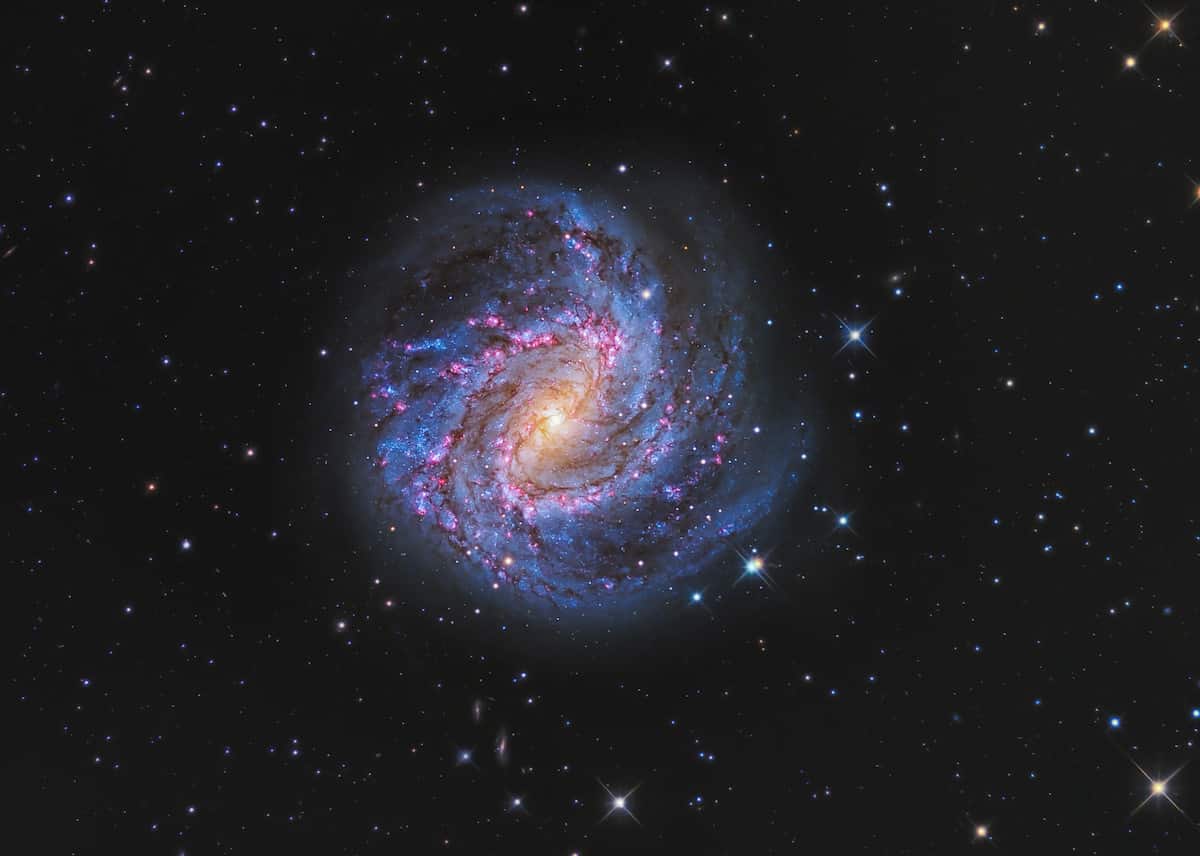
“Hydra’s Pinwheel” by Peter Ward. Galaxies shortlist.
Nicolas-Louis de Lacaille first observed what later became known as the Southern Pinwheel Galaxy on 23 February 1752 from the Cape of Good Hope, South Africa. This image, taken exactly 270 years later, combines a deep set of H-alpha exposures along with color data to highlight the ruby-like star-forming regions of this beautiful barred spiral galaxy.
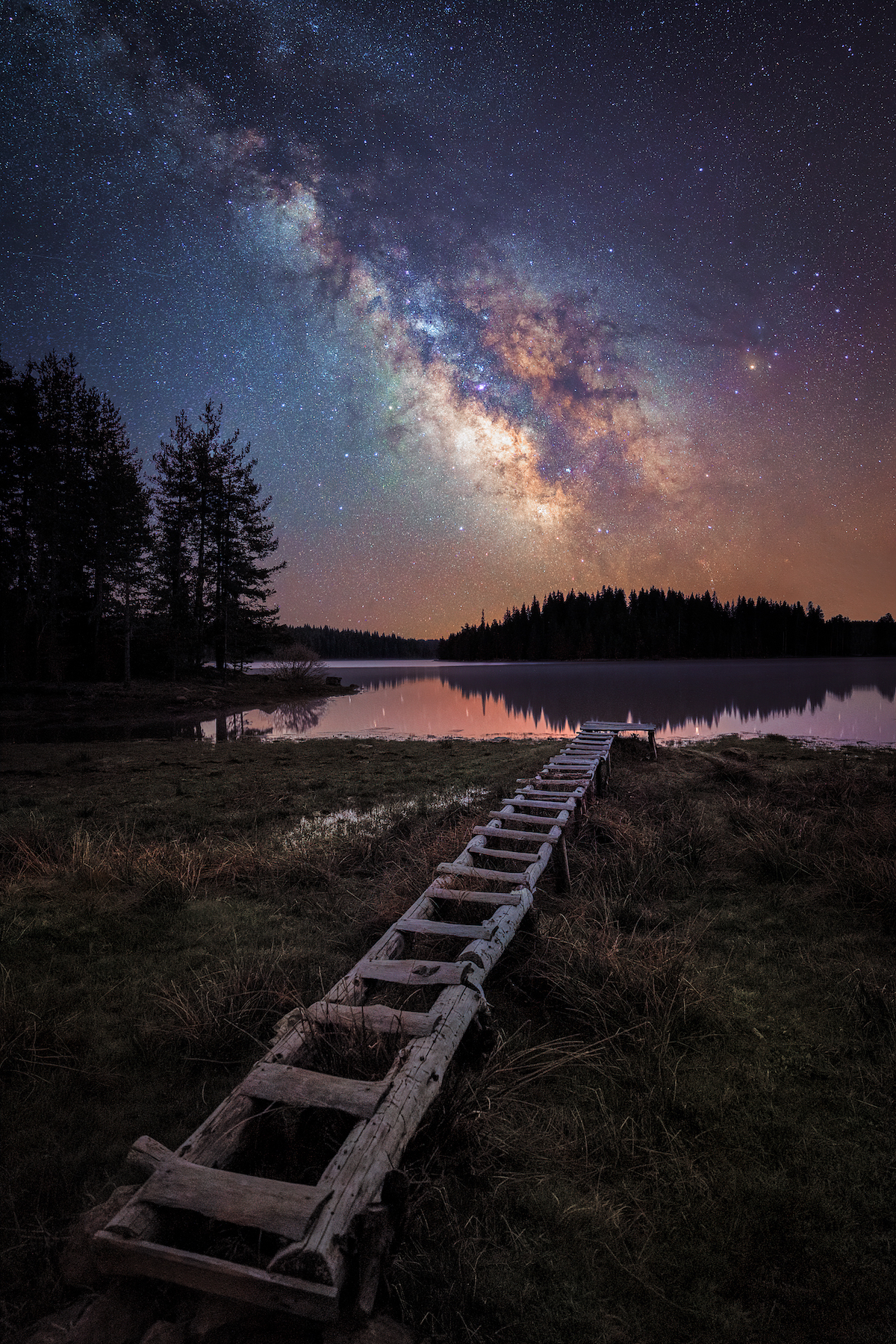
“Ladder to the Stars” by Mihail Minkov. Skyscapes shortlist.
A stacked shot with 15 single exposures, taken in May 2021 at Shiroka Polyana Dam, one of the darkest spots in Bulgaria.
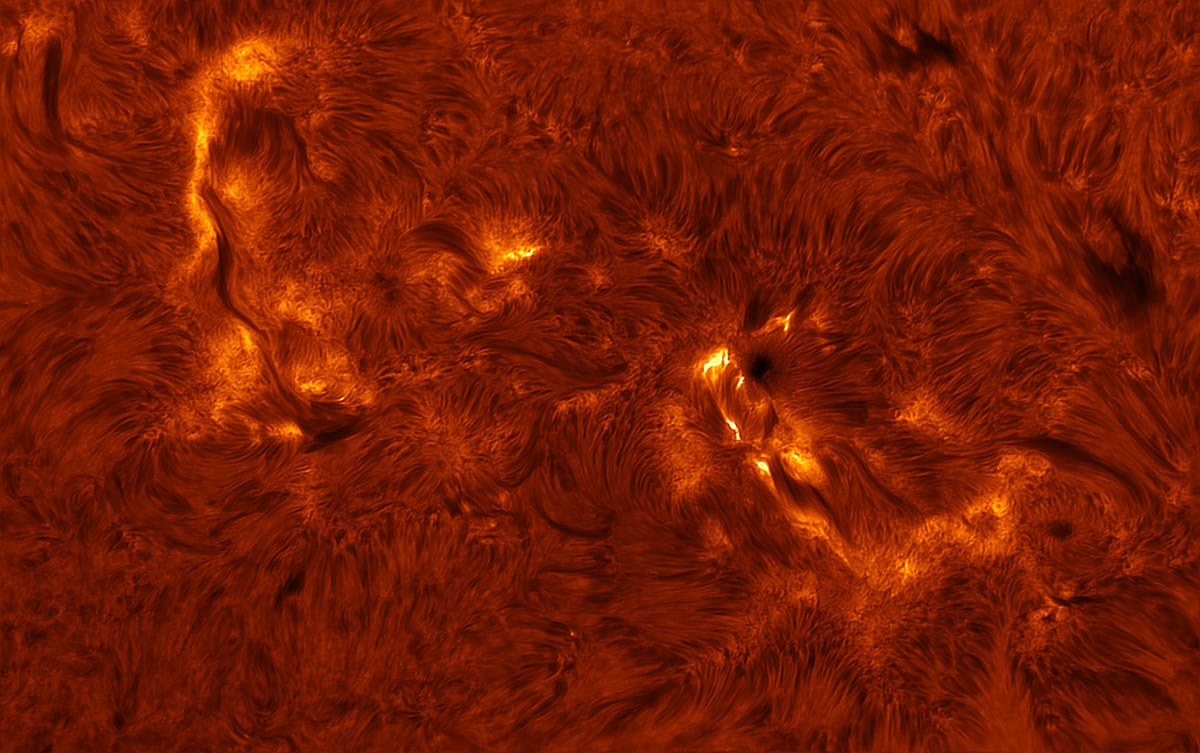
“Solar Inferno” by Stuart Green. Our Sun shortlist.
The Sun looks different every time astrophotographers capture an image as new sunspots form, grow and eventually fade away. The photographer selectively filtered out all wavelengths of light except a narrow red band (known as the H-alphaline) to reveal an active region of change of the Sun.
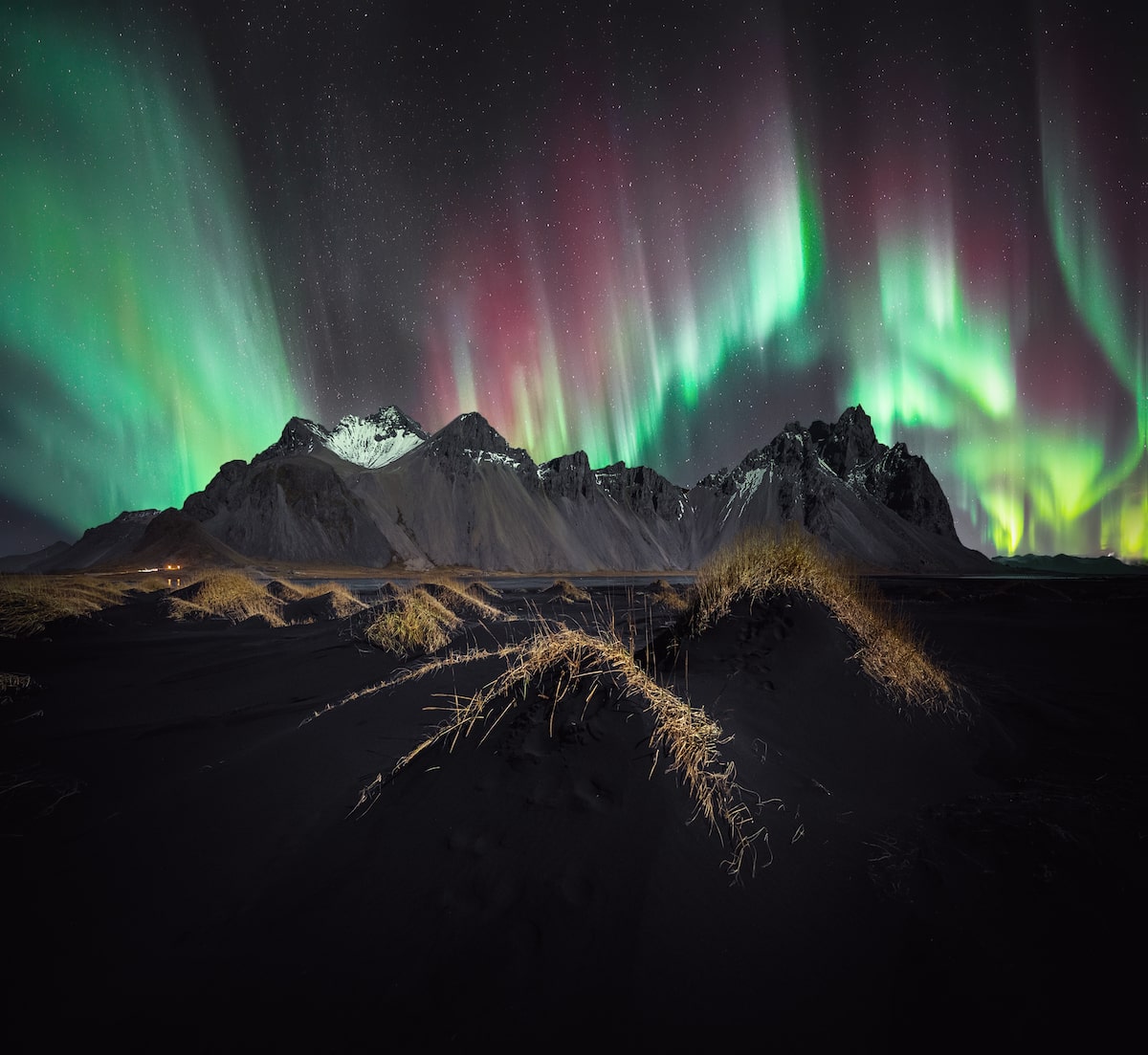
“Spectrum” by Stefan Liebermann. Aurorae shortlist.
The Northern Lights over the famous Icelandic mountain, Vestrahorn. A panorama of three photos, processed with Lightroom and Photoshop.











































































